For 17 days, tens of thousands of anti-government protesters gathered in Tahrir Square calling for the resignation of President Hosni Mubarak, 30 years in power. They had been acting out of passion for their country and dedication for change. They had protested and waited for a response. The response came in an address from Mubarak to the country and his people. Mubarak would not step down. Then almost miraculously, on the eighteenth day of protests, Vice President Omar Suleiman made a very brief statement on state television. Mubarak had stepped down. The crowds erupted "Egypt is free!" "Egypt is free!" -- Paula Nelson (40 photos total)

4
A demonstrator waves his national flag in front of an army tank in Tahrir Square. The Egyptian army is the key player in the standoff between Mubarak and the protesters, Middle East experts say. The military, which is generally well regarded by the protesters, has largely maintained a hands-off policy during the rallies. (Pedro Ugarte/AFP/Getty Images) 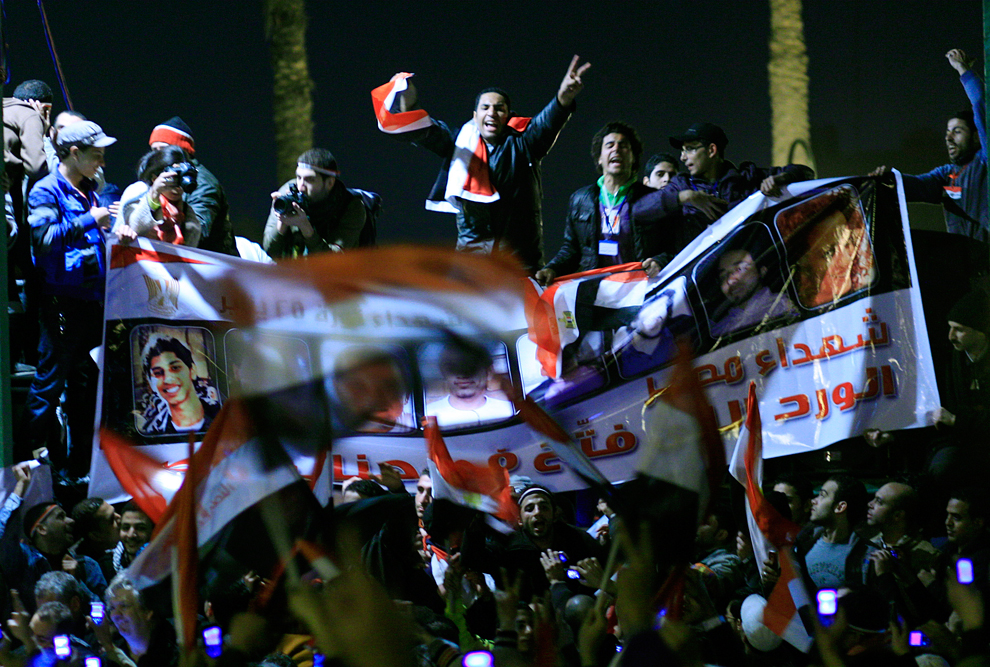
12
Protesters in Tahrir Square display a giant poster showing "the martyrs of the revolution." When Egypt's military announced on national television it had stepped in to secure the country and promised protesters that all their demands would soon be met, the crowd broke into chants of "We're almost there, we're almost there" and waved V-for-victory signs. (Amr Nabil/Associated Press) 
18
President Hosni Mubarak makes a 17-minute statement to his nation in this image taken from television. Following more than two weeks of protests, anti-government demonstrators were given hope by official statements suggesting that Mubarak may step down after 30 years in power. But Mubarak said in his statement that while protester demands are legitimate, he won't give in to foreign dictates. (Egypt TV via APTN/Associated Press) 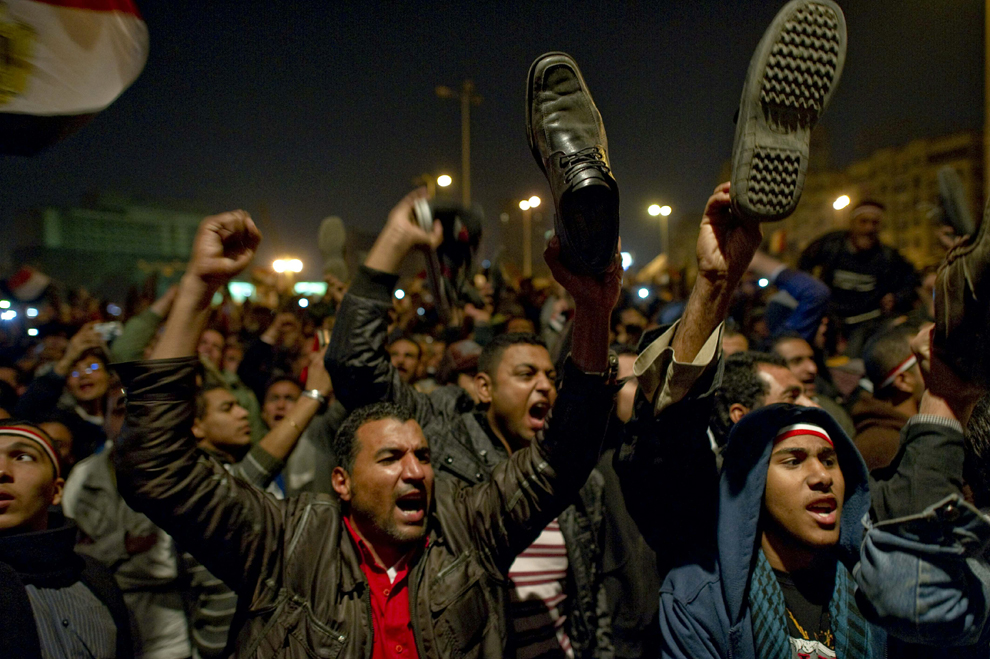
20
Egyptian anti-government demonstrators wave their shoes as they show their anger during a speech by Egyptian President Hosni Mubarak, who failed to announce his immediate resignation, as tens of thousands gathered in Cairo's Tahrir Square. Embattled Mubarak delegated power to his deputy and former intelligence chief Omar Suleiman and proposed constitutional reforms but said the transition to end his 30-year-reign would last until September. (Pedro UgarteAFP/Getty Images) 
21
Anti-government protesters watch on big screen as Egyptian President Hosni Mubarak makes a televised statement to his nation. Egyptian President Hosni Mubarak announced handing over some of his powers to his vice president, Omar Suleiman, and ordered constitutional amendments. But the move means he retains his title of president and ensures regime control over the reform process, falling short of protester demands. Protesters in Cairo's central Tahrir Square, hoping he would announce his resignation outright, reacted in fury and disbelief. (Emilio Morenatti/Associated Press) 
26
The portrait of 18-year-old Egyptian anti-government protester Maath Sayed Mohammed Kamel, killed on January 28, 2011, sits next to an Egyptian flag at the place where he died during clashes between demonstrators and security forces in central Cairo's Tahrir Square, as the 18th day of protests against President Hosni Mubarak's regime began in the landmark square on February 11, 2011. (Pedro Ugarte/AFP/Getty Images) 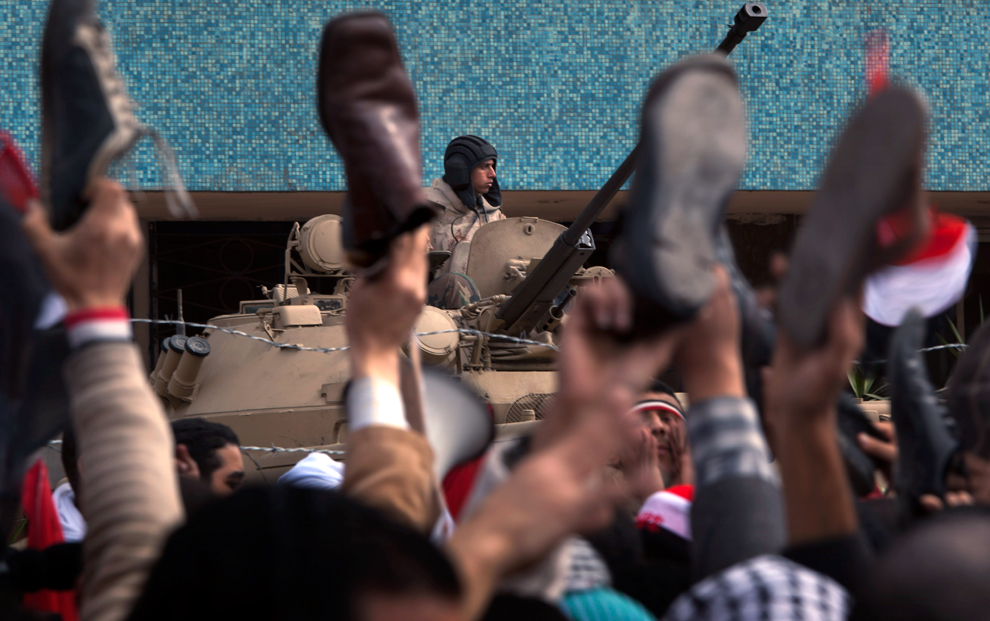
27
An army soldier sits on a armored vehicle as anti-government protesters hold their shoes in the air during a protest in front of the state television building on the Corniche in downtown Cairo, Egypt Friday, Feb. 11, 2011. Stunned protesters, demanding his ouster, waved their shoes in contempt and shouted, "Leave, leave, leave." (Emilio Morenatti/Associated Press) 
29
Protesters weep during Friday prayers inside Tahrir Square. Egypt's powerful army pledged on Friday to guarantee President Hosni Mubarak's reforms in a move to defuse a popular uprising, but many angry protesters said this failed to meet their key demand that he resign immediately. (Dylan Martinez/Reuters) 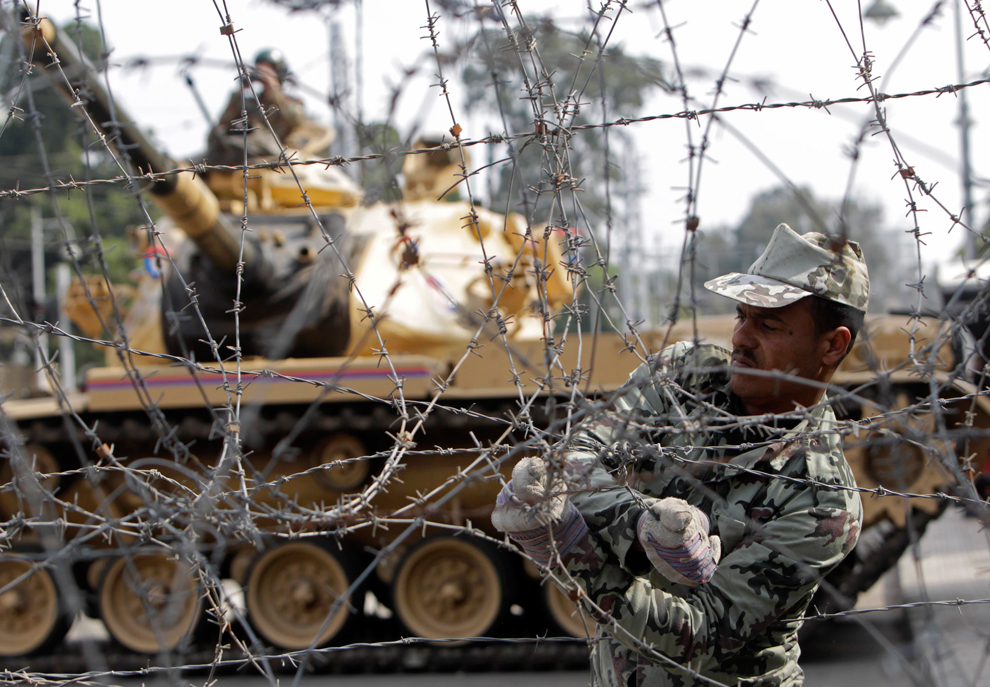
30
A soldier pulls fencing into place in front of the presidential palace in Cairo. Egypt's powerful army gave guarantees on Friday that President Hosni Mubarak's promised reforms would be carried out, but protesters insisted he quit now and cranked up the pressure by massing outside his palace. (Amr Abdallah Dalsh/Reuters) 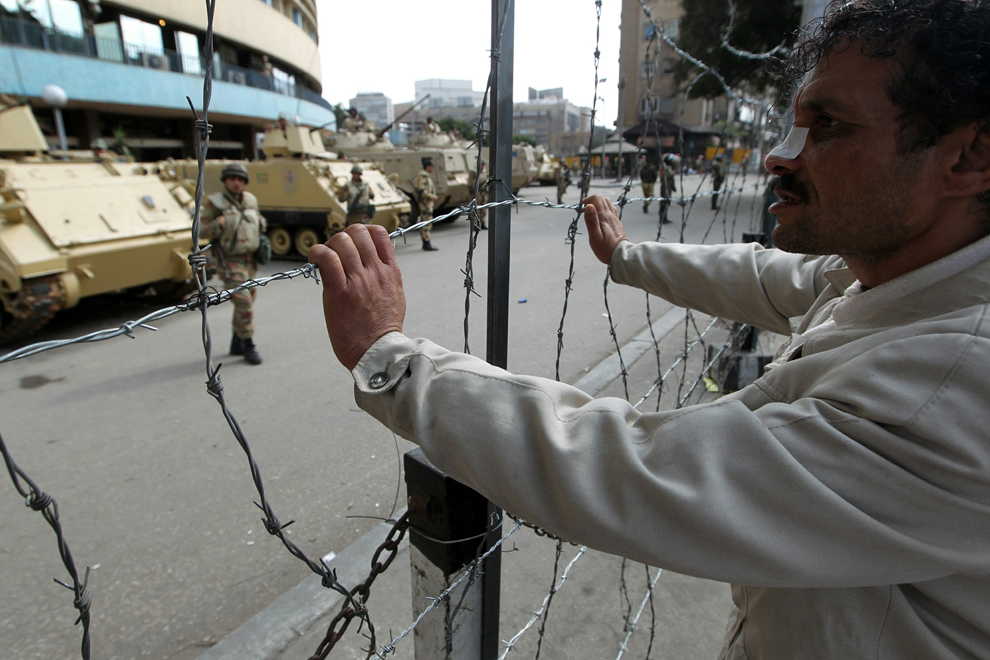
31
An injured Egyptian anti-government protester holds onto barbed wires outside the state television building in Cairo. Thousands of demonstrators massed at Egypt's state television building and at President Hosni Mubarak's palace in the Cairo suburbs as anti-regime protests spread across the city. (Khaled Desouki/AFP/Getty Images) 








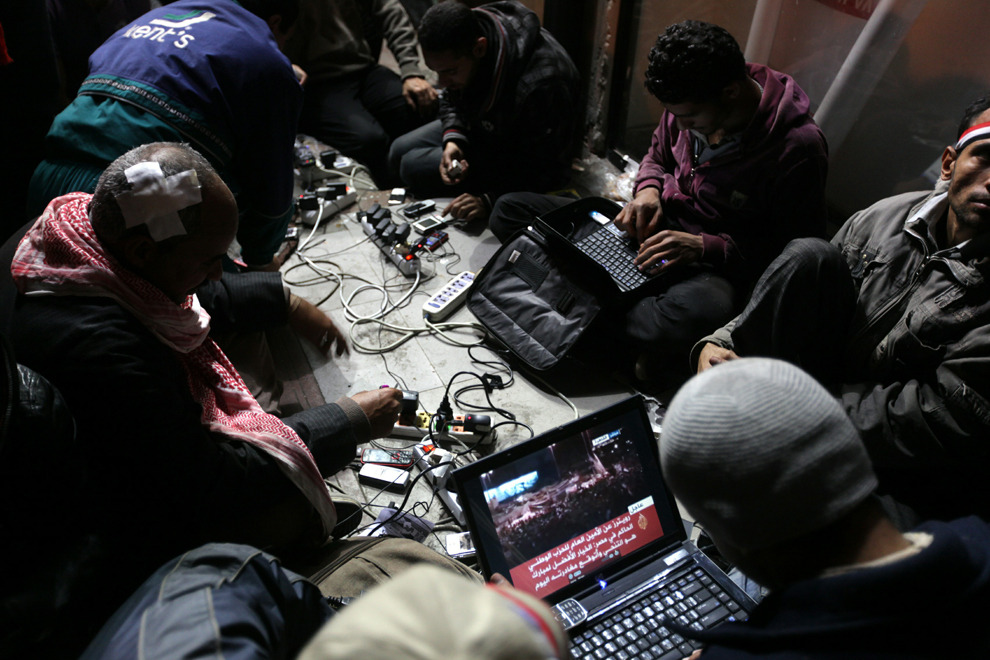
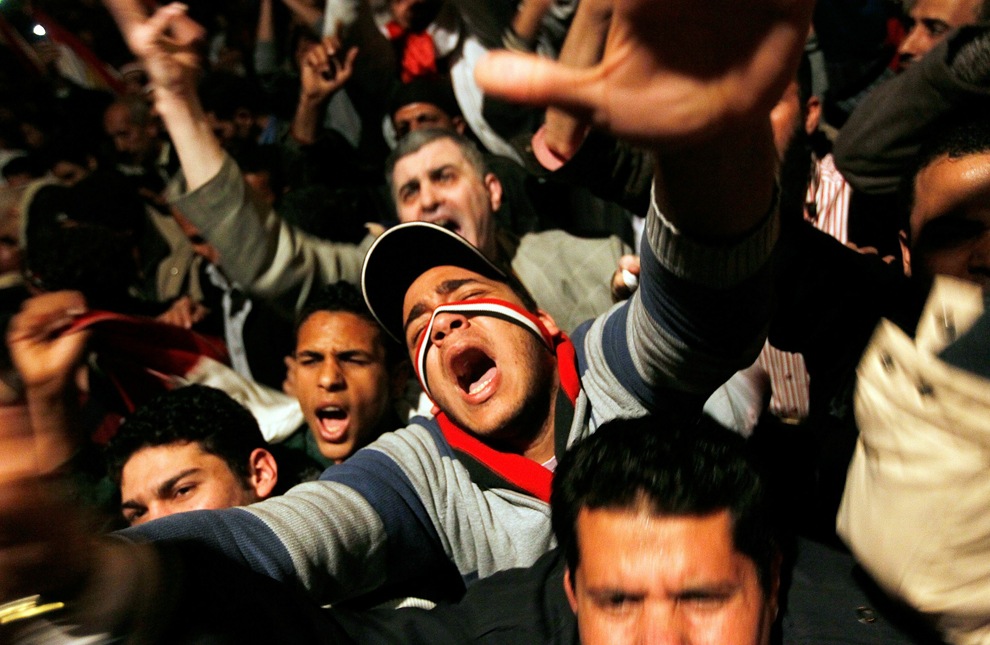
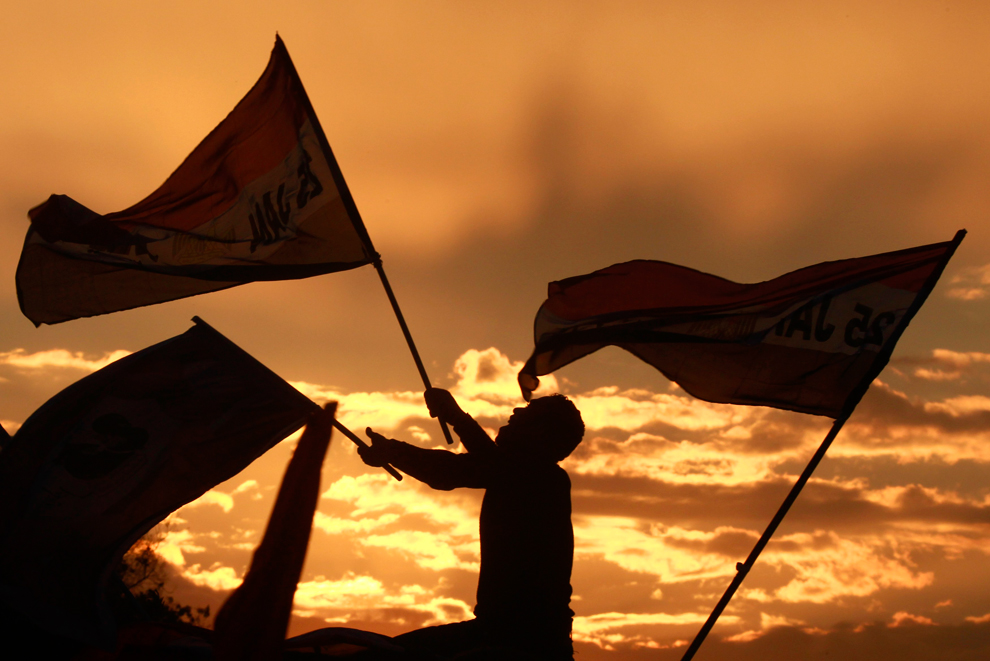

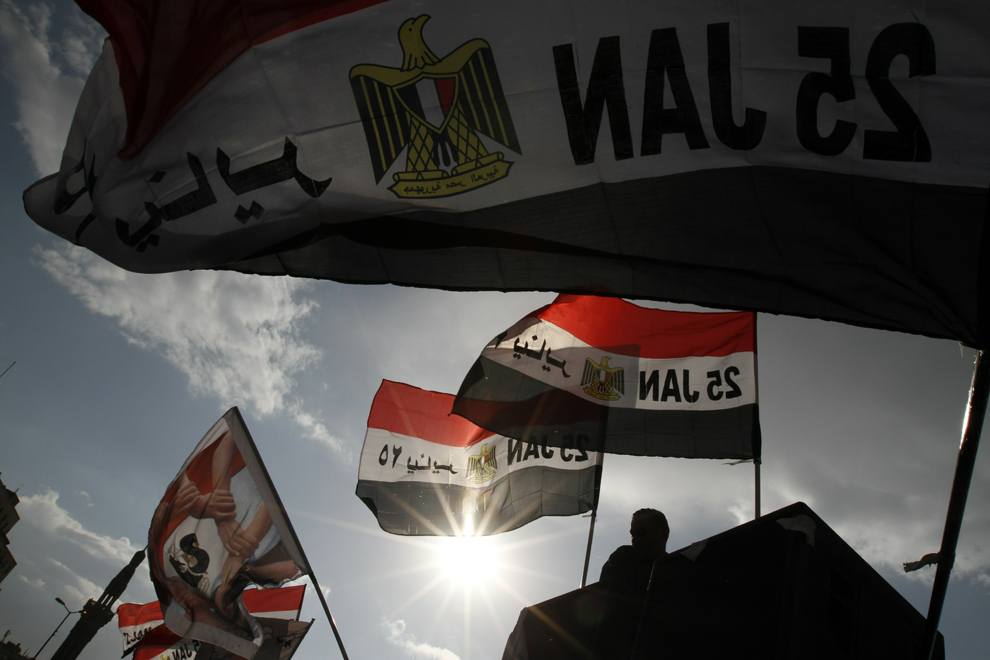

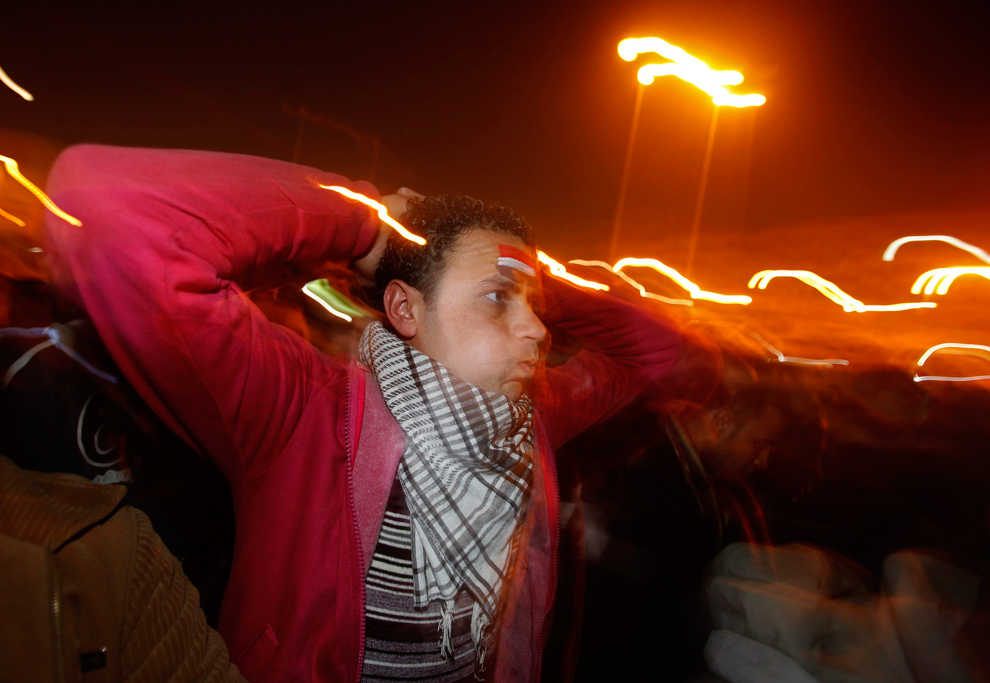
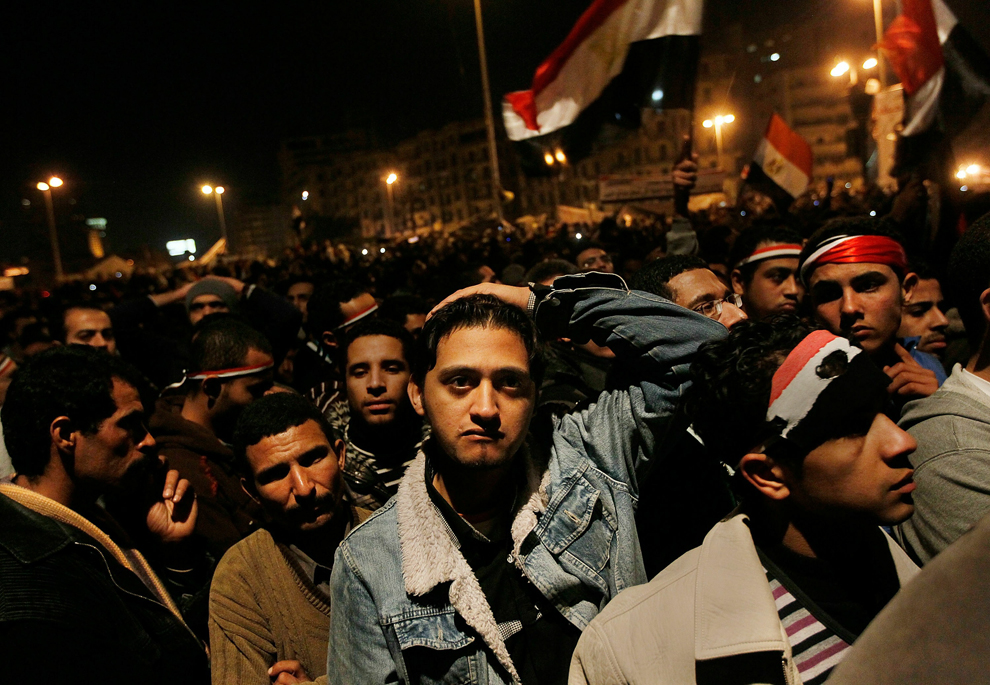
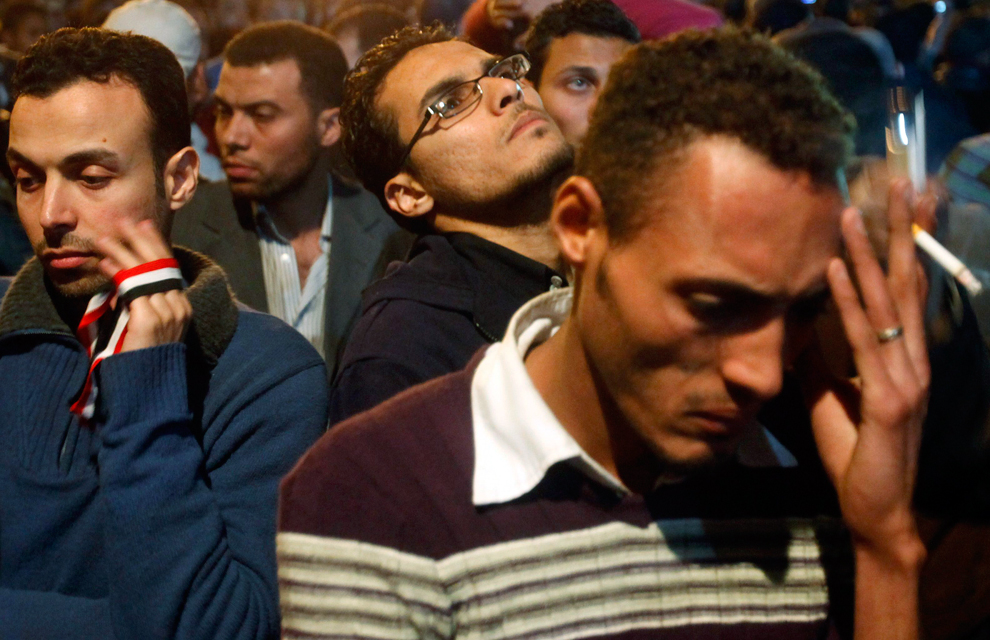
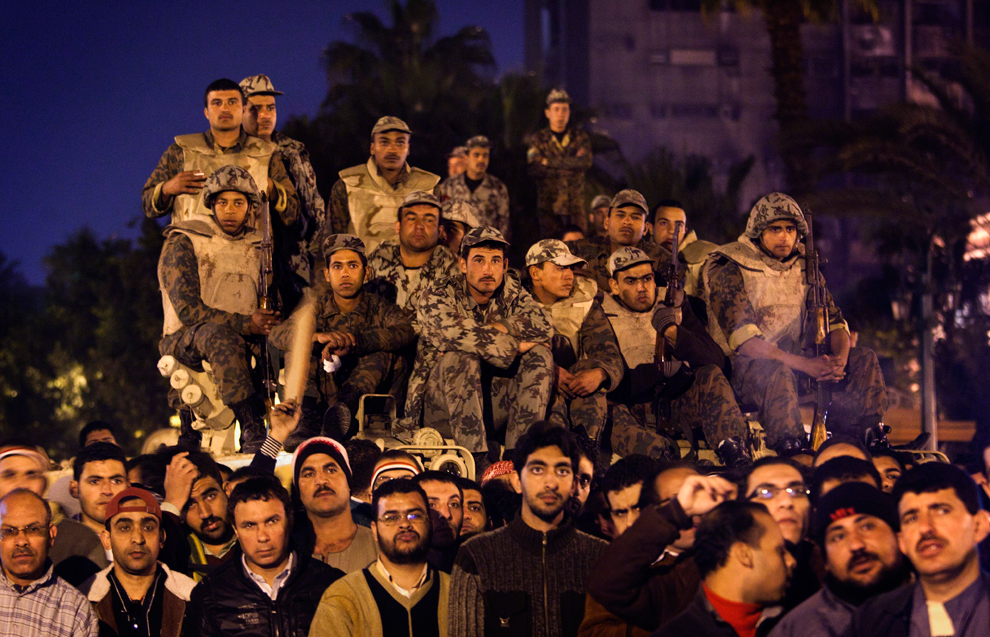

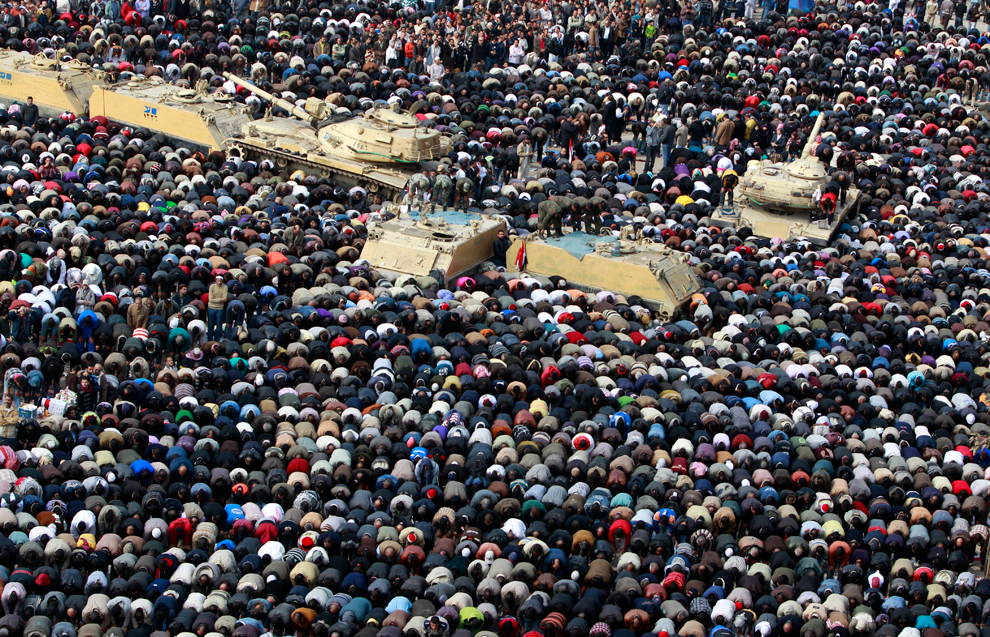

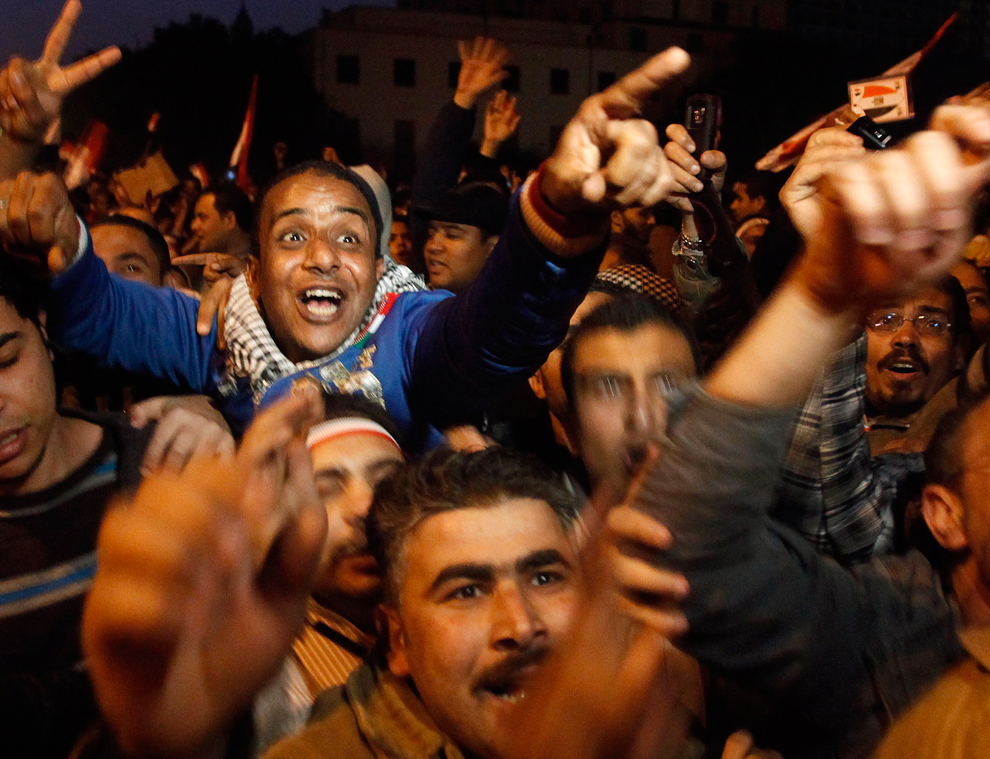

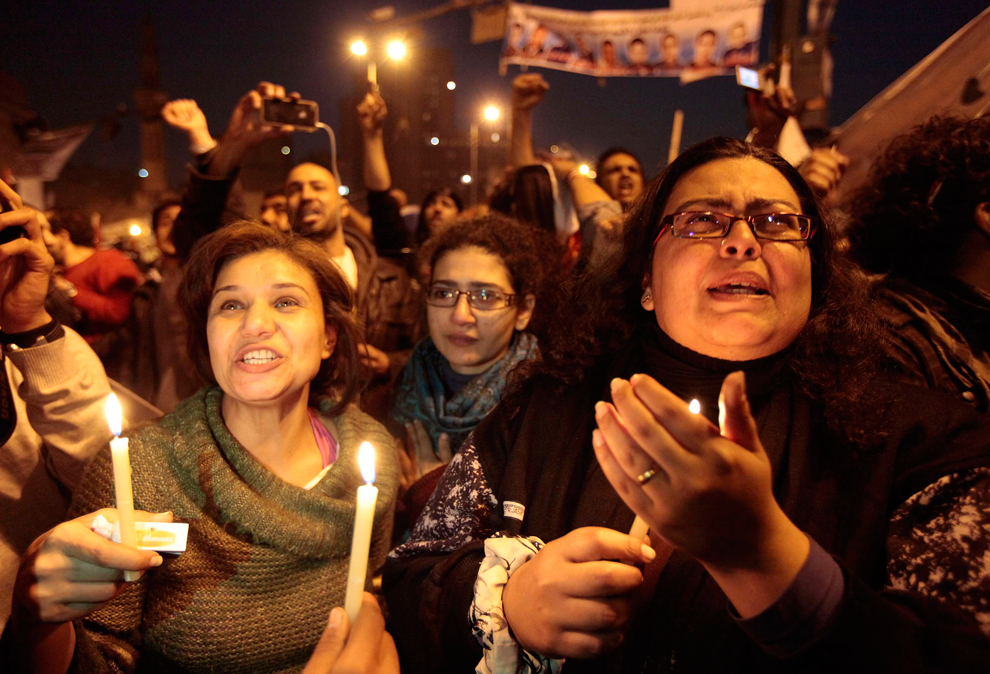

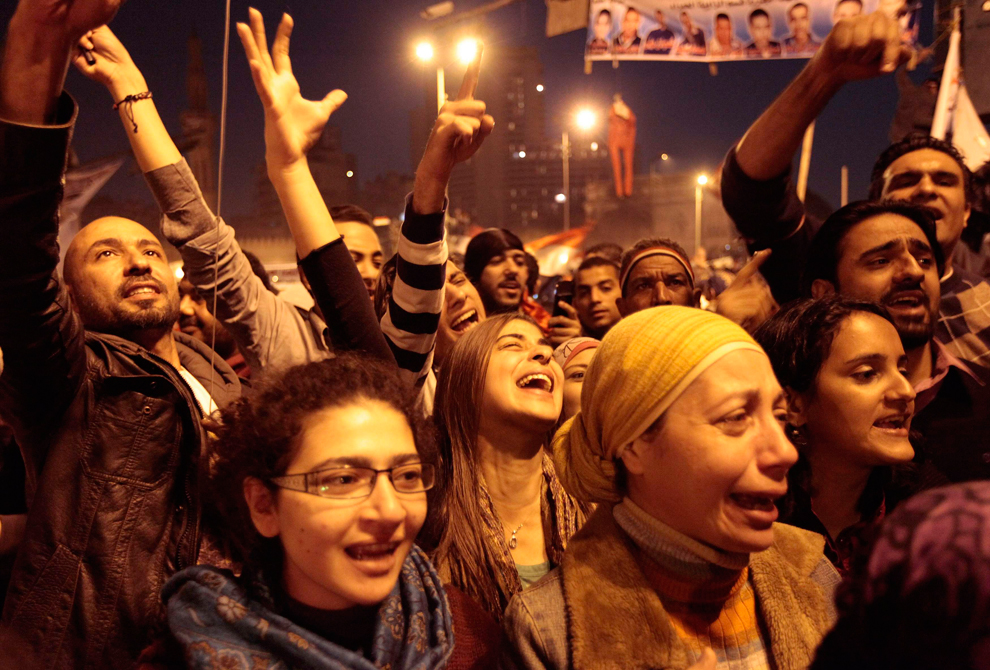
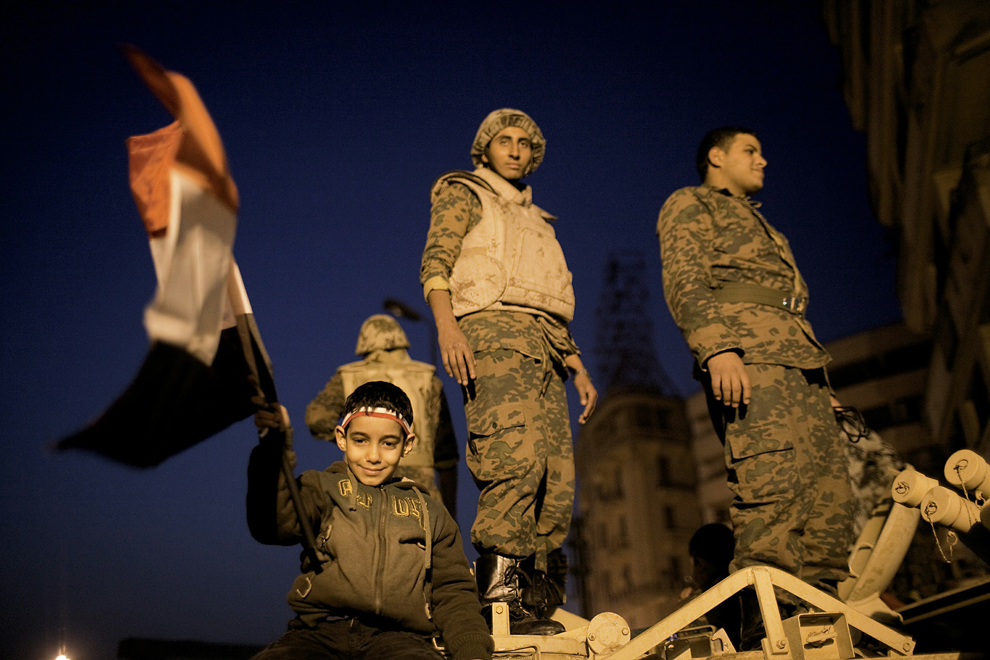


No comments:
Post a Comment